The alliance of pro-Russian communists and nazis fighting against Ukraine in Donbas
Last Thursday, Vladimir Putin claimed that one of the purposes of the Russian invasion of Ukraine was to "denazify" the country. A statement loaded with cynicism.
Russian neo-Nazi parties and the training of German Nazis in Russia
If Putin wanted to "denazify" something, he would have to start with his own country. As I already warned on February 12, Russia has major neo-Nazi parties like the National Socialist Party of Russia, the Russian National Unity, the Pamyat Society and the Eurasia Party. In 2020, the German newspaper Deutsche Welle warned that German neo-Nazis were receiving paramilitary training in Russia, something unthinkable without the consent of the Kremlin, whose security service - the FSB - should not have ignored the presence of these elements in Russia.
Moreover, in 2021, a Russian neo-nazi leader revealed that a Putin deputy minister encouraged him to commit acts of terrorism in Ukraine. Dmitry Demushkin, founder of the neo-nazi group Slavic Union (a split from the aforementioned Russian National Unity) assured in 2014 that Dmitry Rogozin, then deputy prime minister of Russia, would have promised to appoint him mayor of one of the cities of Donbas, the eastern part of Ukraine occupied by Russian military forces and separatist militias, if he recruited people to fight there.
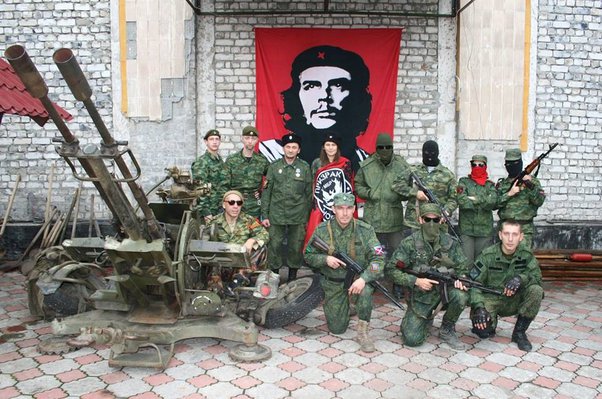
A separatist coup led by communists and that established "soviets"
The Donbas is part of the origin of the current invasion of Ukraine. In March 2014, armed separatist groups took control of Donetsk and Lugansk provinces, turning them into "people's republics", using the terminology used for decades by various communist dictatorships. The denomination was not accidental: the separatists organized "soviets" in the style of the former USSR and turned those provinces into de facto dictatorships.
Skipping the legality, and in an attempt to legitimize their armed rebellion, in May 2014 and in the midst of the war -initiated by them- against the Ukrainian government, the separatists organized a fraudulent independence referendum that was not recognized by any government, nor even for Russia.

Adopting Soviet paraphernalia in a process controlled by Moscow
A Russian media outlet, Gazeta.ru, confirmed two years later that this separatist coup was organized by the Communist Party of Ukraine: "Only they had disciplined assets for the formation of electoral commissions," that information said. "At the forefront of the movement were the grassroots organizations of the Communist Party." In fact, the so-called "Lugansk People's Republic" adopted a Soviet-style shield with the communist red star, while the "Donetsk People's Republic" adopted an imitation of the old Soviet KGB shield for its security service. In November 2014, Alexey Mozgovoi, one of the Lugansk separatist leaders, announced his intention to build a "socialist" state at a commemoration of the 1917 Bolshevik coup.

Despite their contribution to the coup, the Putin regime, which was the real architect of the coup, decided to leave the communists aside and did not even allow their participation in the electoral farce organized in both provinces in November 2014: the separatists they organized legislative elections in Donetsk and Lugansk in which only two pro-Moscow separatist parties could attend. After the elections, "the final lists of deputies were edited in Moscow," Gazeta.ru noted.
The participation of neo-nazi groups in the pro-Russian separatist coup
This process explains the communist paraphernalia that many of the Donbás separatist militiamen have been displaying and the support they have received from the western far-left. But what some ignore is that in that Ukrainian region there are not only communists fighting with the separatists, but also nazis, and not in merely testimonial positions. Without going any further, the first self-proclaimed "governor" of the "Donetsk People's Republic" was Pavel Gubarov, a former member of the neo-Nazi group Russian National Unity.

Just as World War II began with an alliance of Nazis and Soviets to invade Poland, neo-nazi volunteers from the Russian National Unity, the Slavic Union and the Eurasian Youth Union began to arrive in the Donbass. Another of the neo-nazi groups that have fought in the Donbás is the DSHRG "Rusich", led by Alexei Milchakov, of which a photo has been spread displaying a nazi flag. This paramilitary unit is considered a mercenary group and has been accused of war crimes.

The Jewish community in Ukraine warned of the presence of neo-Nazis among the separatists
In September 2014, the Jewish community in Ukraine raised the alert for the increase in the activity of these groups among the separatist insurgency in eastern Ukraine, also warning of the arrival of members of the Black Hundreds, a well-known Russian anti-Semitic group of the tsarist era that reappeared in the 1990s. Its leader, the neo-nazi Anton Raevskii, led a separatist and pro-Russian march in Odessa in March 2014.
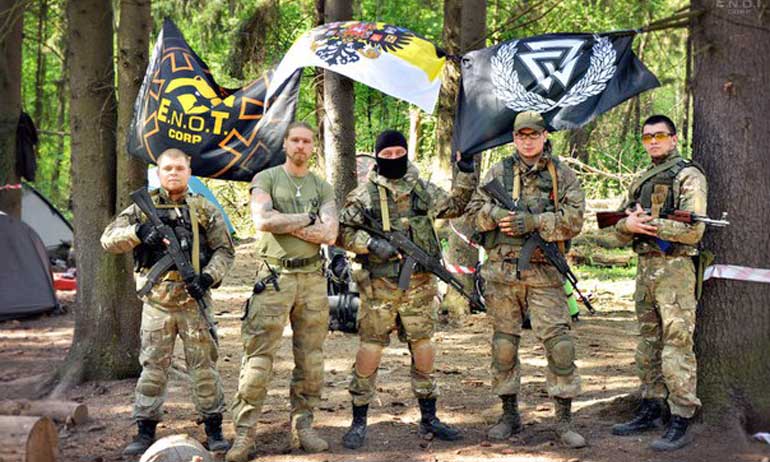
The neo-nazi volunteers who arrived in Donbás from Hungary and Poland
In addition to these Russian and Ukrainian groups, volunteers from Hungary arrived at Donbás, forming the so-called St. Stephen's Legion, a group linked to the Hungarian anti-Semitic and neo-nazi Jobbik party. In June 2014, a Russian media media also reported the presence of a Polish detachment led by Bartosz Beker, former leader of the neo-fascist and anti-Semitic group National Radical Camp (ONR). The alliance of communists and Nazis in support of separatists in eastern Ukraine may explain the coincidence of communists and neo-Nazis in supporting Russia and opposing NATO after the Russian invasion of Ukraine began last Thursday.
---
Main photo: Dmitry Lovetsky/AP. Pro-Russian separatist militiamen in Donetsk province in eastern Ukraine in June 2014.
|
Don't miss the news and content that interest you. Receive the free daily newsletter in your email: Click here to subscribe |
- Most read
- The Pegasus case and how it could end with Pedro Sánchez due to a decision by France
- The real reason for Sánchez's victimizing letter using his wife as an excuse
- The brutal 'touch and go' of a Lufthansa Boeing 747 at Los Angeles Airport
- What did Morocco find in Pedro Sánchez's cell phone to humiliate him in this way?
- The massive takeoff of more than half of the United States B-2 Spirit stealth bombers
- Honors to Corporal Palacios of the Spanish Army who died in an exercise in Poland
- Lenin: numbers, data and images of the crimes of the first communist dictator
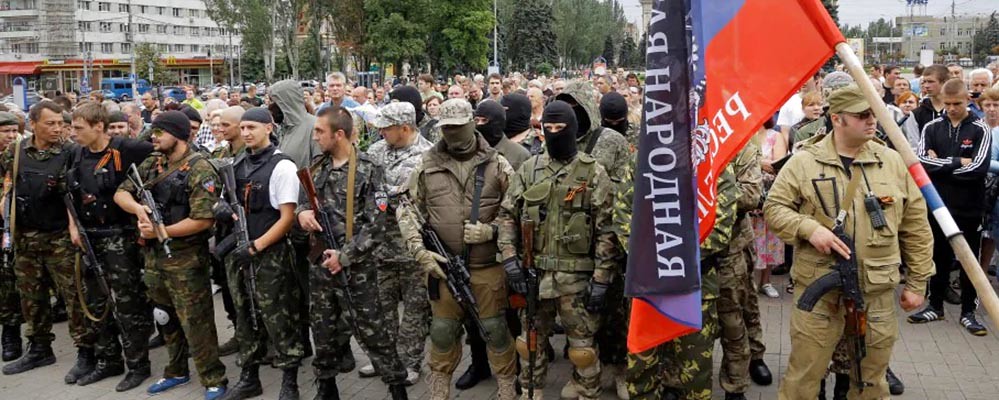
 ES
ES
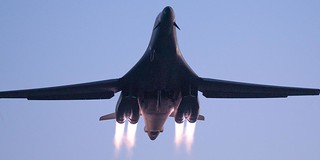



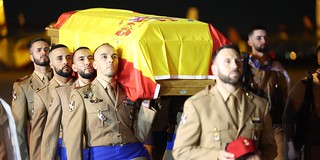
Opina sobre esta entrada: